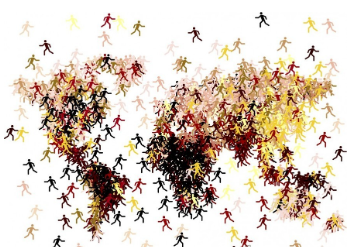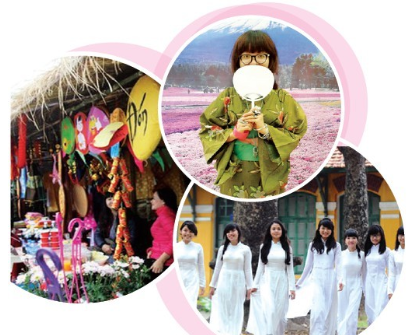Bài học cùng chủ đề
Báo cáo học liệu
Mua học liệu
Mua học liệu:
-
Số dư ví của bạn: 0 coin - 0 Xu
-
Nếu mua học liệu này bạn sẽ bị trừ: 2 coin\Xu
Để nhận Coin\Xu, bạn có thể:

Luyện tập SVIP
Use a dictionary to find the meaning of the word or phrases in the box. Then complete the sentences with their correct form.

| integrate | aspect | for grante | cultural identifier |
1. He had taken it that his friend would tell the truth.
2. are characteristics shared by individuals belonging to the same group or community.
3. When he studied abroad, he successfully into the local culture.
4. His book covers all of a migrant's life.

Four sentences have been removed. Can you put them in the right place?

There are various studies on cultural identity. (1) . Individuals usually define themselves by cultural identifiers such as nationality, ethnicity, location, history, language, gender, beliefs, customs, clothing and food.
It is suggested that cultural identity develops in three stages. (2)
Cultural ideas and values provided by families, communities or the media are easily accepted without much critical thinking. In the second stage, called the cultural identity search,teenagers may become more curious, and willing to explore, analyse and compare their beliefs with other cultures. When people develop a clear sense of cultural identity, know which social group they belong to and feel satisfied with their cultural identity, they reach the final stage called cultural identity achievement.
Living in their own country, people can easily acquire and maintain their cultural identity because they are fully exposed to different aspects of their native culture. They inherit their ancestors' history, knowledge, language, beliefs, values, and customs, which have been passed from one generation to the next one. (3) . In the age of globalisation, access to the Internet and the media provides instant contact with many cultures. A person's cultural identity may be influenced by certain aspects of other cultures. When people move to a new culture, they may react diff erently. Some people feel a strong urge to keep their cultural identity, so they continue speaking their language, cooking their food, wearing their traditional clothing, and celebrating their festivals. They also insist that their children and grandchildren maintain their cultural identity. (4) .
Yet, there are people who integrate into the new cultural environment while keeping their own cultural identity and flexibly adjusting to the different aspects of the new culture.
(Kéo thả hoặc click vào để điền)
There are various studies on cultural identity. (1) Cultural identity is usually understood as the identity or feeling of belonging to a group that has its own culture. Individuals usually define themselves by cultural identifiers such as nationality, ethnicity, location, history, language, gender, beliefs, customs, clothing and food.
It is suggested that cultural identity develops in three stages. (2) The first stage, known as <i>unexamined cultural identity</i>, occurs duringchildhood, when culture is taken for granted.
Cultural ideas and values provided by families, communities or the media are easily accepted without much critical thinking. In the second stage, called the cultural identity search,teenagers may become more curious, and willing to explore, analyse and compare their beliefs with other cultures. When people develop a clear sense of cultural identity, know which social group they belong to and feel satisfied with their cultural identity, they reach the final stage called cultural identity achievement.
Living in their own country, people can easily acquire and maintain their cultural identity because they are fully exposed to different aspects of their native culture. They inherit their ancestors' history, knowledge, language, beliefs, values, and customs, which have been passed from one generation to the next one. (3) However, people often do not confine themselves to one culture. In the age of globalisation, access to the Internet and the media provides instant contact with many cultures. A person's cultural identity may be influenced by certain aspects of other cultures. When people move to a new culture, they may react diff erently. Some people feel a strong urge to keep their cultural identity, so they continue speaking their language, cooking their food, wearing their traditional clothing, and celebrating their festivals. They also insist that their children and grandchildren maintain their cultural identity. (4) On the other hand, there are people who choose to abandon their heritage culture and assimilate into the new culture of the majority.
Yet, there are people who integrate into the new cultural environment while keeping their own cultural identity and flexibly adjusting to the different aspects of the new culture.
Read the passage again and answer the questions.
1. How do individuals define themselves?
2. What happens in the first and the second stages of the formation of cultural identity?
3. When do people reach the final stage?
4. Why can people's cultural identity be affected by other cultures even if they live in their native country?
5. What are the three ways people react when they move to a new culture?
What should you do to develop your cultural identity in today's modern society?


Bạn có thể đăng câu hỏi về bài học này ở đây
